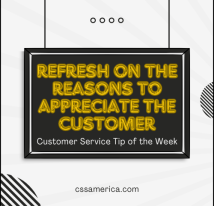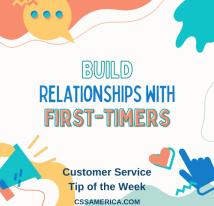
Consumer research studies have shown that customers who engage employees typically bring 1 of 5 emotions into the conversation: Anger, Fear, Sadness, Contentment, or Happiness.
Let’s focus on the first 3 – the tougher emotions of Anger, Fear, and Sadness. They are very different emotions where – in the first case – the person is angry in general, at something, about something or their situation or an individual.
Fear is often a sense of being worried or panicked about the future, the unknown, the next step.
Sadness often is from a depression or a feeling of helplessness about their situation.
When you’re interacting with others, you deal with them differently based on the emotions they convey. You’ll want to defuse the Angry customers, gain control of the conversations, convey some empathy, possibly apologize, and deliver on a solution. With the Fear and Sadness, you go heavier on the empathy, asking them about themselves, telling them about yourself and your related experience to build their confidence. You’re explicit on what the next steps will be to make the “future” known.
But how do you know what emotion they’re conveying? Well, you can tell often without having to even hear them say a word.
Those that are angry typically have these characteristics of body language:
- Crossed arms
- Rolling eyes
- Rapid movement/gestures
- Clenched fists
- Shoulders up
- Pointing
- Leaning (too) close in – to your/others’ personal space
- Furrowed brow.
Those that are afraid/sad typically have these characteristics of body language:
- Little/no eye contact
- Head shaking while looking at information
- Fidgeting
- Sweating
- Hand over the mouth
- Blank stares
- Glassy eyes/tears.
Begin reading others through their body language. Before they even say a word, you can gauge their emotions and prepare yourself to respond appropriately.
Read their wordless emotions to respond in the right way.
Signup for FREE Tips! Contact Us More Resources for You Visit Our Home Page























